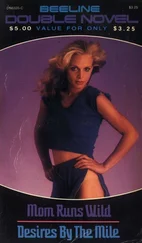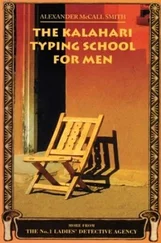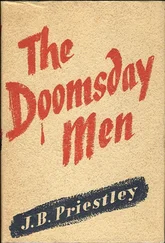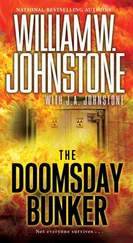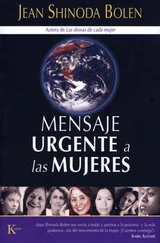The writer and scientist Johann Wolfgang von Goethe satirized the hubris of scientists in his version of the Faust story by alluding to the recipes of Paracelsus. Mephistopheles has to lend a hand to breathe life into a homunculus, or ‘little man’, which Faust’s overly ambitious assistant, Wagner, is seeking to create by alchemical means. A century later, in 1908, Somerset Maugham’s novel The Magician described how a modern-day alchemist (based on the real occultist Aleister Crowley) attempts to create a living being, also by Paracelsian techniques. But in the age of radium it seemed that science might finally realize this ancient dream.
The Parisian scientists told Moffett how unfertilized sea-urchin eggs had been miraculously stimulated into growth. He informed his readers that ‘we may in the future be able to produce new species of insects, moths, butterflies, perhaps birds and fishes, by simply treating the eggs with radium rays’. He suggested that, given greater quantities of radium, even mammals might be changed in this way, ‘to produce new species among larger creatures, mice, rabbits, guinea-pigs, etc’. Moffett also told how French scientists were using radium to create ‘monsters’. They had found that tadpoles exposed to radium developed differently, their tails began to disappear and they grew ‘a new breathing apparatus’. 80In the 1950s, fears about radioactivity and genetic mutation would spawn now classic monster movies, such as Godzilla and Them! The stirrings of Frankenstein’s monster can be heard in these words of Moffett’s, and perhaps for that reason he chose not to dwell on this frightening subject.
Cleveland Moffett ends his article on radium’s miraculous potential with the triumphant claim that ‘we are entering upon a domain of new, strange knowledge and drawing near to some of Nature’s most hallowed secrets’. 81It was a message of hope. But now, in an age that has become deeply ambivalent about science and scientists, it sounds more like a warning.
Following the discoveries made by the Curies, matter soon came to be seen as a ‘reservoir of atomic energy’. 82Sir William Crookes had suggested in a speech to physicists in Berlin in 1903 that if natural radioactivity was caused by the disintegration of atoms, then all matter was in a state of inevitable decay: ‘This fatal quality of atomic dissociation appears to be universal and operates whenever we brush a piece of glass with silk; it works in the sunshine and raindrops, and in the lightnings and flame; it prevails in the waterfall and the stormy sea.’ 83As someone commented, matter – the basic substance of the universe – was ‘doomed to destruction’. 84
In the previous century, the laws of thermodynamics had raised the frightening prospect of what was called ‘the heat death of the universe’. The second of these laws asserts the irreversibility of natural processes, whereby heat cannot be transferred from a cold body to a hot one. Related to this is the concept of entropy, which is a measure of the unavailability of a system’s energy to do work. As the physicist Rudolph Clausius said in 1850, entropy is always increasing. The implication of these laws is that in the distant future, when entropy ultimately reaches a maximum, the universe’s heat will have dissipated to such an extent that life will become unsustainable.
In The Time Machine , H. G. Wells’s Time Traveller, ‘drawn on by the mystery of the earth’s fate’, journeys forward 30 million years to a time when ‘the red-hot dome of the sun had come to obscure nearly a tenth part of the darkling heavens’. The earth has fallen silent and is gripped by freezing winds. ‘All the sounds of man, the bleating of sheep, the cries of birds, the hum of insects, the stir that makes the background of our lives – all that was over.’ 85For all our insight into the universe and its workings, humankind is ultimately powerless before the laws of thermodynamics. As the philosopher of science Alfred North Whitehead said, in the ancient world it was gods who determined the fates of mortals. But in the modern world, the laws of physics have become the ‘decrees of fate’. 86
Wells’s novel appeared in the year that Röntgen chanced upon the astonishing rays that could render solid matter transparent. The discovery of radioactivity and the disintegration of matter added a new scientific doomsday to the eventual heat death of the solar system. A writer for the Edinburgh Review was shocked by the apocalyptic implications: Sir William’s idea conjured up ‘an appalling scene of desolation – of quasi-annihilation’. 87
In his 1909 novel Tono-Bungay , H. G. Wells rendered yet another memorable scene of desolation. The book is an attack on the values of capitalism and the new consumer society. Tono-Bungay is a health tonic which has much in common with the radium tonics widely available at the time. The narrator, George Ponderevo, describes his uncle’s invention and marketing of this successful (though totally useless) medicine. According to its inventor, it’s ‘the secret of vigour’, but for George, who like Wells had studied the sciences, it’s nothing but ‘a quack medicine’. 88
In this ambitious novel, Wells uses a powerful scientific metaphor for the terminal decay of society: radioactivity. To save his uncle’s business, George makes a foolhardy trip to Africa to smuggle back a quantity of radioactive ore. It contains ‘canadium’, which they hope to use to make the ‘perfect filament’. ‘We’d make the lamp trade sit on its tail and howl,’ predicts George’s greedy uncle. ‘We’d put Ediswan and all of ’em into a parcel with our last trousers and a hat, and swap ’em off for a pot of geraniums.’ 89
The pitchblende-like radioactive ore is called ‘quap’ in the novel: it is ‘the most radioactive stuff in the world… a festering mass of earths and heavy metals, polonium, radium, ythorium, thorium, carium, and new things too.’ 90But quap is far more radioactive than even radium and polonium: ‘those are just little molecular centres of disintegration, of that mysterious decay and rotting of those elements, elements once regarded as the most stable things in nature’. 91
In comparison, quap is ‘cancerous’, says George. It is ‘something that creeps and lives as a disease lives by destroying; an elemental stirring and disarrangement, incalculably maleficent and strange’. Perhaps influenced by Sir William Crookes’s doomsday vision, George offers a remarkable one of his own, inspired by the creeping contagion of radioactivity:
To my mind radioactivity is a real disease of matter. Moreover it is a contagious disease. It spreads. You bring those debased and crumbling atoms near others and those too presently catch the trick of swinging themselves out of coherent existence… When I think of these inexplicable dissolvent centres that have come into being in our globe… I am haunted by a grotesque fancy of the ultimate eating away and dry-rotting and dispersal of all our world. So that while man still struggles and dreams his very substance will change and crumble from beneath him… Suppose indeed that is to be the end of our planet; no splendid climax and finale, no towering accumulation of achievements but just – atomic decay! I add that to the ideas of the suffocating comet, the dark body out of space, the burning out of the sun, the distorted orbit, as a new and far more possible end – as science can see ends – to this strange by-play of matter that we call human life. 92
The African landscape where the seam of quap breaks to the surface has been devastated by radioactivity. The coast is a ‘lifeless beach’ littered with rotting fish. Stretching as far as the eye can see is an atomic wasteland which is ‘blasted and scorched and dead’. 93People who stay there too long sicken and die. This powerful passage, written decades before anyone grasped the full dangers of radioactive contamination, now brings to mind the poisoned landscape around Chernobyl. For Wells, his Dantean vision of ultimate decay is a metaphor for a society that had nowhere to go but down. Today it also offers a haunting vision of the dark side to our dreams of atomic utopia.
Читать дальше


